What is boot device. What does the message "Reboot and Select proper Boot device ..." mean. BIOS battery failure
Imagine that one day you turn on your computer, but it only boots up to halfway, and such an interesting inscription is displayed on your monitor: “reboot and select proper boot device or insert boot media in select boot device”.
You will most likely look at this with a slightly surprised face. However, you should be warned right away that there is simply no reason to panic. If you see a similar inscription on your monitor on a black background, this short article in the form of an instruction can help you.
If you delve into the translation of this inscription, then we are advised to reboot and decide on the correct boot device, or insert one of the boot drives into the selected device and confirm your action by pressing any button. It should be noted right away that such an error can affect not only Windows users 7, 8, but also XP.
This manual can help you figure it out. The solution to the problem can be either the simplest or a little more complicated, but our task is to acquaint you with them. In addition to the error written a little above, there are other variants of text similar in meaning: “No bootable device - insert boot disk and press any key, No boot device available ". These errors can be reported in different ways, depending on your BIOS version.
Reasons why the error appeared
- The BIOS settings are out of order and the boot sequence is not lined up correctly.
- Various errors related to the hard drive.
- There is a virus on your computer that you must get rid of.
- The hard drive has suffered physical damage and is refusing to function properly.
The easiest and most effective way to get rid of the error
Such an error can pop up on your monitor if any flash drives are connected to your computer or laptop, as well as hard drives. In this case, you should simply disconnect these devices before the next reboot.... Your task is to forcibly remove such devices from the computer and restart the computer again. This will most likely solve your problem.
If the easiest way didn't help
As you noticed, when loading, you may be prompted to press not only the "DEL" key, but "F9". On your computer, this may be a different key, but it will be indicated next to the words: "... to Select Booting Device after POST", or with words similar in meaning.
- We press this key. In this case, we press "F9".
- After the appearance of the simplest menu called "Boot Menu", select "Hard Disk". This option is suitable for those who want to boot from a disk or flash drive.
- Now we just need to select the device through which we want to boot using the "Enter" key. If you are better off downloading from a connected flash drive, then among all devices it will have its own name. You can also select the "CDROM" option, and then the download will be done using the disc.
The main thing is after Windows installations return to the BIOS again to select your "Hard Disk" in the "First Boot Device" item.
The following outstanding reasons why the error is popping up
- Your motherboard in your computer has lost a working battery. She's just shrunken and needs to be replaced.
Your computer is unplugged too often. - You have a problem with the power grid, which causes constant power surges.
- Problems with the power supply.
You can personally notice one of all these reasons if you are attentive to the time and date on your computer. The first symptoms that one of these breakdowns has already taken place is that your date and time are reset after each computer start-up. There is a way out - replacing the battery on your motherboard, and also try to establish a stable power supply, and return to the BIOS to fully configure the boot.
Windows bootloader damaged
In this case, a similar inscription appears "No boot device available - No bootable devices-strike F1 to retry boot, F2 for setup utility-".
Such an inscription can be formed if some malicious program has damaged your computer.... It could also be due to too frequent power outages in your home. If you do not properly shut down your computer, and also experiment with the various functions of the hard disk. In other cases, a virus program does not allow you to fully boot your computer, and requires money from you to any electronic wallet.
A simple explanation of how easy and simple to restore the boot using the example of Windows XP
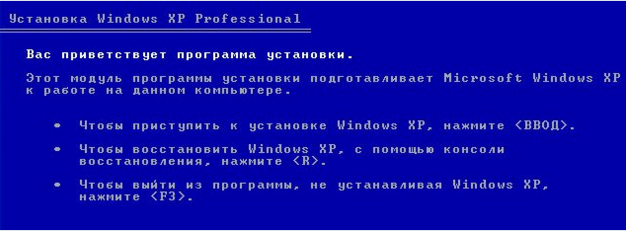
Likely reasons why this error appears on your monitor
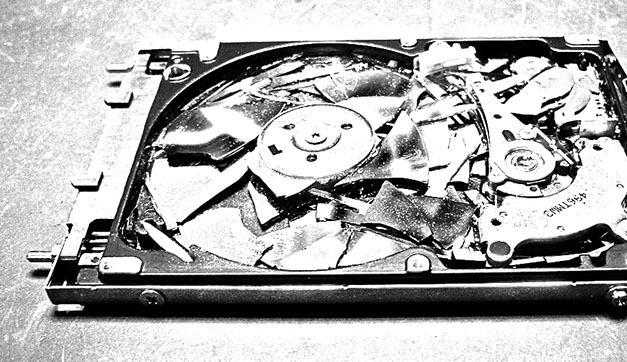
When you turn on the computer, it boots up for the first time. The main unit responsible for this action is a microcircuit called BIOS or UEFI (for modern computers), originally installed on the motherboard by the manufacturer. If everything is fine, the operating system (OS) installed on the computer is loaded, and the user starts working with it. When a problem occurs, an error message is displayed on your monitor. One such warning is - Reboot and Select proper Boot device. Let's analyze it in detail.
About what a Reboot error is and Select proper boot device, can be judged from the translation of the text, where it is written about the need to reboot and select the appropriate media. That is, the user is notified that no device has been found from which to start the system. Naturally, until the error is completely fixed, the Windows OS, which we will be considering, will not boot.
Error message Reboot and Select proper Boot device or Insert Boot Media in select Boot device
The main reasons for the error:
- shot down BIOS settings;
- errors in the main hard disk or a connected USB drive, including those related to physical damage;
- infecting your computer with a virus;
- failure of the BIOS power supply battery;
- voltage drops in the electrical network to which the computer is connected;
- malfunction of the power supply;
- damaged Windows bootloader.
How to solve the problem
If BIOS settings are lost
To restore the settings, which will consist in choosing the boot sequence, you must enter the BIOS. To do this, usually at the very beginning of the system startup, you need to continuously press and release the DEL key. She, of course, may be different. The exact name of the key can be seen on the monitor screen at the time of initial boot. After entering BIOS, select Advanced BIOS Features // Boot seq & Floppy Setup // First Boot Device, check the priority of the boot sequence and press Enter. The disk with the OS installed on your computer should start first.

Setting the boot priority of computer storage devices
After the final selection of the medium, press the Esc key, enter Y in the window that opens at the SAVE to CMOS and EXIT prompt and press Enter.

Exit BIOS while saving settings
Also desired disk can be selected at boot time by continuously pressing and releasing the F9 or F10 key (it all depends on the configuration of the computer). But this option is convenient only if you need one-time downloads, since you constantly need to make a choice.
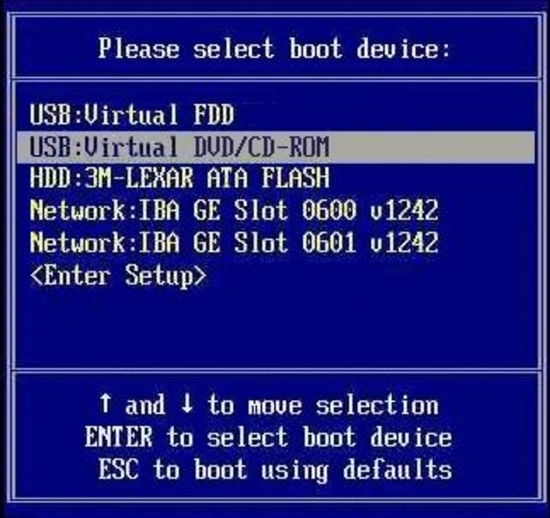
Selecting the media to run
On modern computers installed instead of the classic I / O system BIOS new extended version of the interface - UEFI. But it can be difficult to enter it to make changes due to fast loading, the User simply does not have time to do it. This usually applies to systems starting with Windows 8. To correct the situation, first try to log on to the system by selecting the desired drive at boot time. Then, in the control panel, in the power supply parameters, uncheck the checkbox for enabling quick launch and then save your changes.

Disable Fast Startup at Computer Startup
After restarting the computer, the boot will no longer occur so quickly and you will be able to see on the monitor screen the "hot keys" required to enter the UEFI BIOS. After entering, it is enough to arrange the media icons in the desired order using the mouse on the Boot Priority tab, simply by dragging them.
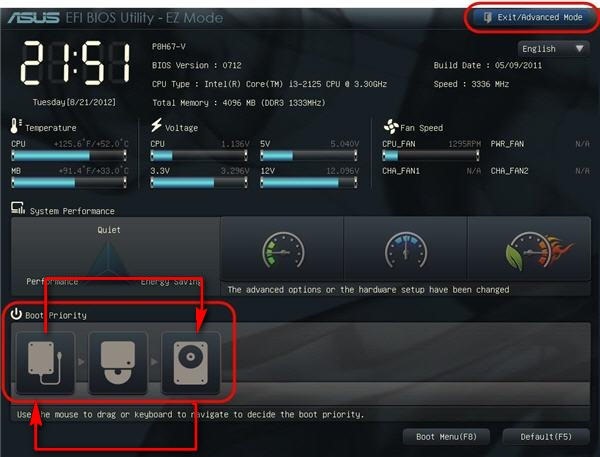
Selecting the media loading sequence
Since the UEFI BIOS may differ from manufacturer to manufacturer, sometimes you need to additionally select the BIOS Features item and act by analogy with changing such settings in the standard BIOS.
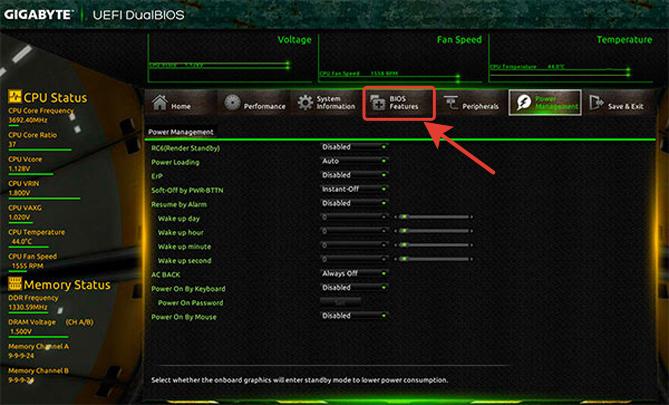
Selecting BIOS Features Settings to Change the Media Boot Sequence
Video: fixing the Reboot and Select proper Boot device error via BIOS
Errors in the operation of the hard disk, connected USB-media or DVD-drive
A hard drive with Windows installed can become the source of problems that cause the system to start error. Failures can occur due to physical wear and tear of the drive, all kinds of mechanical failures associated, for example, with the fall system unit when transferring. Also, problems arise when you accidentally delete some system files, as a result of viruses, damage to the working loop.
To check the health of the hard disk and quick recovery bad sectors it is best to use a set of utilities for testing a computer Hiren's Boot CD, launched from a bootable disk under DOS. The operation of the program is very simple. After loading it is enough to select "DOS Programs / Hard Drives / Name of the checked disk". Next, sequentially select Drive level tests menu / Check and Repair bad sectors. The verification program starts. If, as a result, the bar at the bottom of the screen turns out to be blue, then HDD All right. If there are software glitches, the utility will repair the bad sectors. The presence of red sectors indicates a malfunction of the hard disk and the need to replace it.

The process of checking the hard disk for bad sectors and troubleshooting
Also if you have emergency disk from which you can boot Windows, then do it. With a successful start, you can be sure that there are no problems with the hard disk yet.
An error can also occur if the hard disk pins are poorly connected to the interface and power cables. Check the reliability of the contacts. Replace connection cables if necessary. In addition, you should check the power supply to the hard drive connection cable itself.
To test a USB or DVD drive, you just need to physically disconnect them and then connect them one by one until a malfunction is detected.
Computer infection with a virus
Loading error can also occur from actions malware, most negatively affecting the operation of the system. To keep Windows secure, you must use an antivirus program. For home use, the free utility Avast, which is built into the tray and blocks malicious code, is quite suitable. Run this program for execution and it will scan the system, detect and destroy viruses.
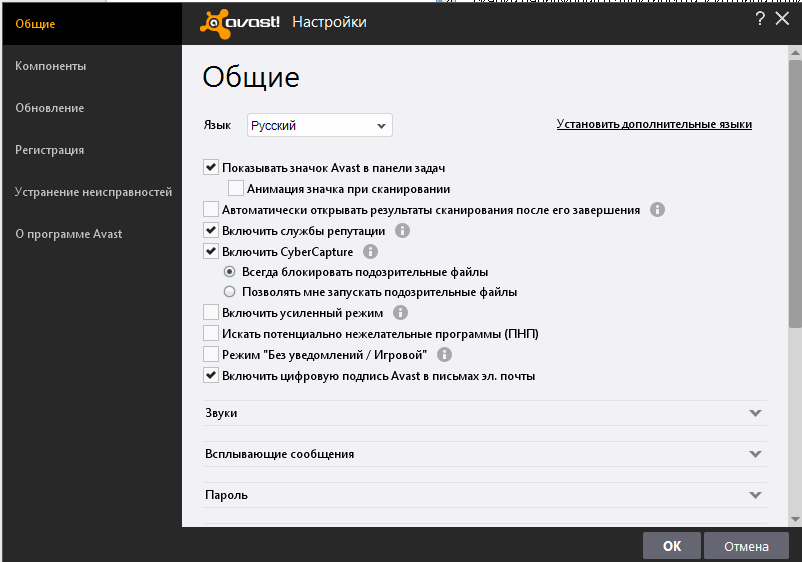
In the settings, you can select the enhanced mode for more accurate scanning of the system and removal of malicious code
BIOS battery failure
When the battery is discharged, the BIOS begins to lose the set date and time settings, especially when complete shutdown computer from the network. Simply replace the BIOS battery located on the motherboard after powering down the computer.
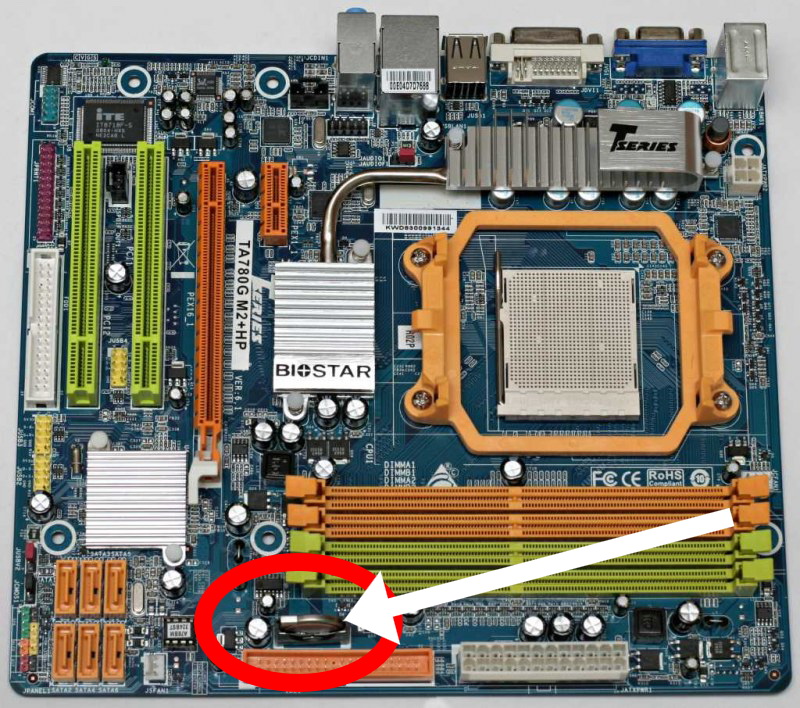
Replacing the BIOS battery
Power surges in the electrical outlet to which the computer is connected
When you connect your computer to an unstable network with frequent power surges, a system startup error may also occur. In this case the best solution there will be installation of a surge protector that stabilizes the power supply.
Power supply failure
The systems may not start due to problems with the power supply unit (PSU). It may simply exhaust its resource, or failures may occur due to a lack of power in connection with devices additionally connected to the computer. Try to turn off some energy consumers, for example, a printer, scanner, flash drives, etc. If the system starts to start, then this indicates a lack of power and you need to turn off some of the devices or replace the power supply unit with a more powerful one.
Damage to the Windows bootloader
Computer problems can be caused by a variety of reasons. These are viruses, the launch of unverified programs, system failures, etc. As a result, the Windows bootloader may be damaged, which will lead to the inability to start the system. At the same time, a message appears on the monitor screen: No boot device available - No bootable devices-strike F1 to retry boot, F2 for setup utility.
Let's look at the example of Windows XP, how to fix this:

After the message that the new boot sector has been successfully written, enter the command exit and press Enter. The operating system should now boot normally without crashing.
Prophylaxis
You should not bring your computer to the point where the Reboot and Select proper Boot device error will have to be fixed. To do this, it is enough to carry out timely care, carry out preventive work and not do what you are not sure of.
- Monitor the power supply and replace the BIOS battery in a timely manner.
- Avoid dust accumulation on the motherboard, assemblies and parts of your computer.
- Do not connect new equipment to the computer yourself without first consulting a qualified technician.
- Be sure to install antivirus protection. It will protect your computer from the negative effects of malware.
- Exercise regularly backup important information and save it to external media.
You should always have a bootable system disk with a set of utilities for diagnosing and restoring your computer's performance.
The following instructions to fix the Reboot and Select proper Boot device error should not cause any difficulties for the user. But, in any case, you should not allow actions that can lead to malfunctions. After all, a computer is a complex electronic device, which must be treated with care and attention.
The computer is turned on in a semi-automatic mode. First, a black screen appears with brief information, then the system starts to boot. The first actions of the user are usually to enter a name and password in the Windows interface, up to this point, his role is limited to monitoring the monitor. Everything changes when, instead of the system greeting, the alarm message lights up: "Reboot and select proper boot device or insert boot media in select boot device". In this case, you will have to help the computer deal with the problem.
What does the message "Reboot and Select proper Boot device ..." mean?
Translated into Russian, the inscription may mean something like the following: "Reboot and select a working boot device or insert the bootable media into the selected boot device."
In some BIOS versions, a similar situation causes other text messages: "No bootable device - insert boot disk and press any key" or "No boot device available". Their meaning is the same.
When such a message appears, user intervention is indispensable.
Speaking simple language, the computer could not fully boot itself and asks the user to change the instructions for getting started in one of the following ways:
- Select a different (good) boot device.
- Insert boot disk or other external storage(for example, a USB flash drive) to the selected boot device.
Unfortunately, you cannot ignore this message, the computer will refuse to work until the cause of the problem is eliminated.
Why did the error message appear
The BIOS stores instructions for booting the operating system, which indicate the media on which the boot files, and also marked the priority of disk devices. Therefore, the error can be the result of a problem with any of the elements of this chain.
BIOS error
- BIOS failure due to dead battery is a common problem with older computers. Usually the battery “outlasts” the PC, since its resource lasts more than five years, and the devices are updated more often. But if the system unit continues to properly serve the owner for longer than this period, the battery is discharged, and BIOS failures begin.
- A consequence of outside interference. Trying to customize the BIOS to suit your needs, the user could enter incorrect instructions, the execution of which led to a failure.
- Poor power quality. Power surges can cause errors in the BIOS, and more serious consequences.
Drive problems
The primary hard drive can also be a source of failure. Problems can also be found with the drive itself, for example, its physical wear or damage as a result of a fall, and with key information stored on it - accidental deletion of system files, the operation of malware. Do not forget about intermediate links: cables, adapters, cables, plugs and other little things that provide power to the drive and read information from it.
Power supply problems
A faulty or insufficiently powerful power supply can lead to a power outage of certain elements of the computer, including the disk with bootable system files.
Malware operation
Computer viruses try to get as deep as possible into the system, so their activity or the work of anti-virus applications fighting against them can lead to various problems, including the appearance of the error "Reboot and select proper boot device or insert boot media in select boot device".
How to solve the problem
Insofar as possible reasons there are many alarm messages, you should exclude them one by one until the true one is found. Let's start with simple steps being careful not to harm your computer.
Step 1. Checking the DVD drive and USB ports
Most computers set the priority of the drive and external device ports when determining the boot order.
This is done to make it possible to use rescue disks or flash drives in case of problems with the hard disk. The downside of this technology is boot failure when the BIOS interprets a disk in the tray or an attached USB drive as a system one.
Therefore, we disconnect all external devices and remove the disc from the DVD drive, if it remains there, after which we try to reboot again.
Step 2. Checking BIOS power
A characteristic sign of a low BIOS battery is the regular reset of settings, including the current date and time. In addition, the parameters are guaranteed to get lost if you turn off the computer from the network for a few minutes.
If these symptoms occur, replace the battery located on the motherboard... This is a simple operation that requires only care and adherence to precautions, including powering off the computer.

The battery needs to be replaced with a new one.
Step 3. Checking the hardware components
To check the sufficiency of the power supply output power, turn off all additional devices connected to the computer:
- external monitor;
- flash drives;
- a printer;
- network cable and other energy consumers.
In addition, a stable mains supply must be used to provide sufficient input current. If, after all the measures taken, the computer has successfully booted, you should either replace the power supply with a more powerful one, or reduce consumption by rejecting some of the external devices.
During the check, you should also pay attention to the indicator of the hard disk and the sounds made. If the indicator does not light up, most likely the problem is hardware, that is, the power supply is out of order or the cable has come off the drive. Also, a typical sign of problems with the power supply is the regular boot of the computer only from the second or third time. If the indicator lights up, but the hard drive makes unusual harsh sounds, then, perhaps, the matter is in the breakdown of the drive. In both cases, it is better to take the computer to a workshop to check the operation of the components on the bench.
Step 4. Configuring BIOS
Incorrect BIOS settings can cause the system to attempt to boot from the wrong media. This problem is typical for computers with more than one physical disk. Therefore, let's start the BIOS and set the correct priorities.

Step 5. Alternative choice of boot device
Some manufacturers build in the ability to call the boot device selection window using function keys... The most common options are F10, F12, less often F8 or F9. This method is also suitable if, for some reason, it was not possible to configure the BIOS according to the previously described algorithm.

Step 6. Boot from a rescue disk or USB stick
In order to check if the system hard disk with the installed operating system and the information on it, you need to boot from an external medium: an emergency disk or a USB flash drive with an installed OS.
Of course, a prerequisite for this method is the presence of such a carrier. If there is no rescue disk or flash drive, you can create them (using another, serviceable, computer) by downloading the necessary files from the website of antivirus manufacturers, for example, Dr Web.

You can download the contents of the rescue disk directly from the DrWeb website
By connecting a USB flash drive or placing a disk in the drive tray, go into the BIOS again and set the boot sequence with the priority of the selected device. This procedure can be carried out using hot keys directly from the boot window or manually by changing the parameters in the menu. Do not forget to return the boot priority from the hard disk after the system restore is completed.
Step 7. Check the computer with an antivirus
A successful boot from the rescue drive indicates that the problem lies in the Windows hard drive. This can be a physical problem (breakdown or poor power supply) or software, for example, the result of malware.
We check the availability of the hard disk (using Explorer or another file manager find out if the system disk icon is reflected):
- If Windows does not see the hard drive, you can remove the cover of the system unit and find out if the connectors have moved away from the drive. If everything is in place, then it's time to carry the computer to service center, since it is necessary to check the supply of power and the absence of physical damage to the disk, and for this, appropriate instruments are required.
- If the disk is available, then the reason is not a physical breakdown, but a software one, so you need to run an anti-virus program, usually added to the rescue disk. It is possible that this will be enough to solve the problem.
Correcting a mistakereboot and select proper boot device - video
How to repair the Windows bootloader
BIOS recovery and access to the hard drive will ensure the relative performance of the computer by booting from external media. However, if damaged Windows bootloader instead of normal BIOS operation, we will be greeted with another inscription "No boot device available - No bootable devices-strike F1 to retry boot, F2 for setup utility". In an approximate translation into Russian, it means "No available boot device - No boot devices - press F1 to reboot, F2 to call the configuration utility."
If the problem persists, it remains possible to choose the option to restore the system using backup points. This method will help even if Windows damage malware.
Windows Boot Repair - video
How to avoid errors
To avoid seeing a similar message on your computer screen again, you need to take some precautions:
- Computer care. It is necessary to monitor the computer hardware, change the BIOS battery in time (especially at the first time and date failures), and avoid dropping and other physical impacts on the components. An additional warning sign of hard drive problems can be a characteristic high-pitched sound.
- Skilled intervention. Any tampering with the BIOS or computer hardware must be supervised by a qualified technician. Connecting additional components (video cards, hard drives, drives, etc.) must be consistent with the power supply output power.
- Antivirus protection. You should protect your computer from malware using antivirus software a trusted manufacturer.
- Reservation. It is necessary to regularly save important information to external media, as well as create backup system restore points.
- Tools. The "emergency kit" must contain bootable media (disk or flash drive).
A black screen when you turn on your computer instead of the friendly Windows screensaver does not always mean a fatal error. First, you can try to fix the problem yourself. If the problem persists, contact the service center. Qualified specialists will definitely help you.
 Wireless Charging Smartphones A5 Supports Wireless Charging
Wireless Charging Smartphones A5 Supports Wireless Charging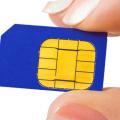 Why do not MTS sms come to the phone?
Why do not MTS sms come to the phone? Why do you need a full factory reset on Android or how to return Android to factory settings
Why do you need a full factory reset on Android or how to return Android to factory settings